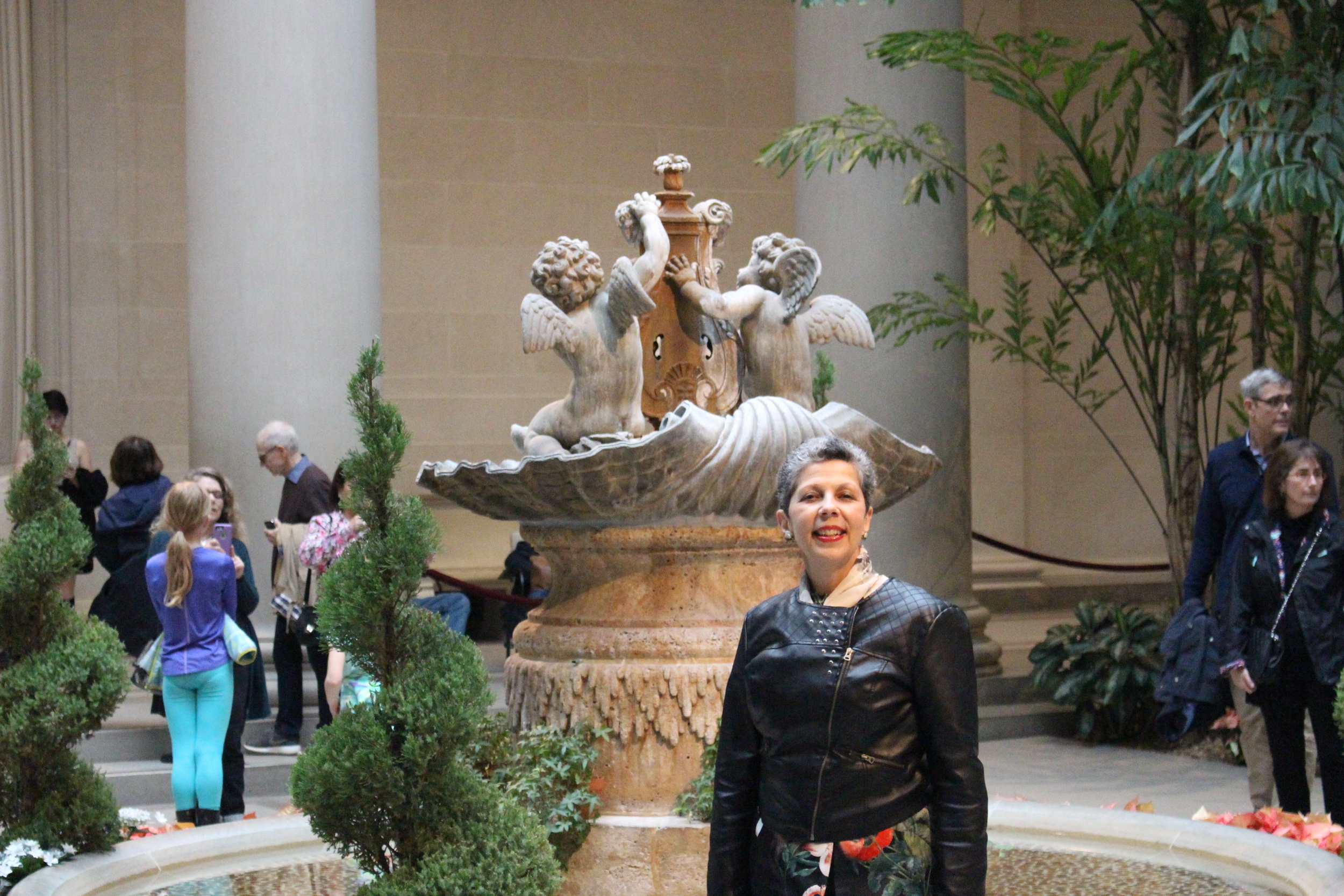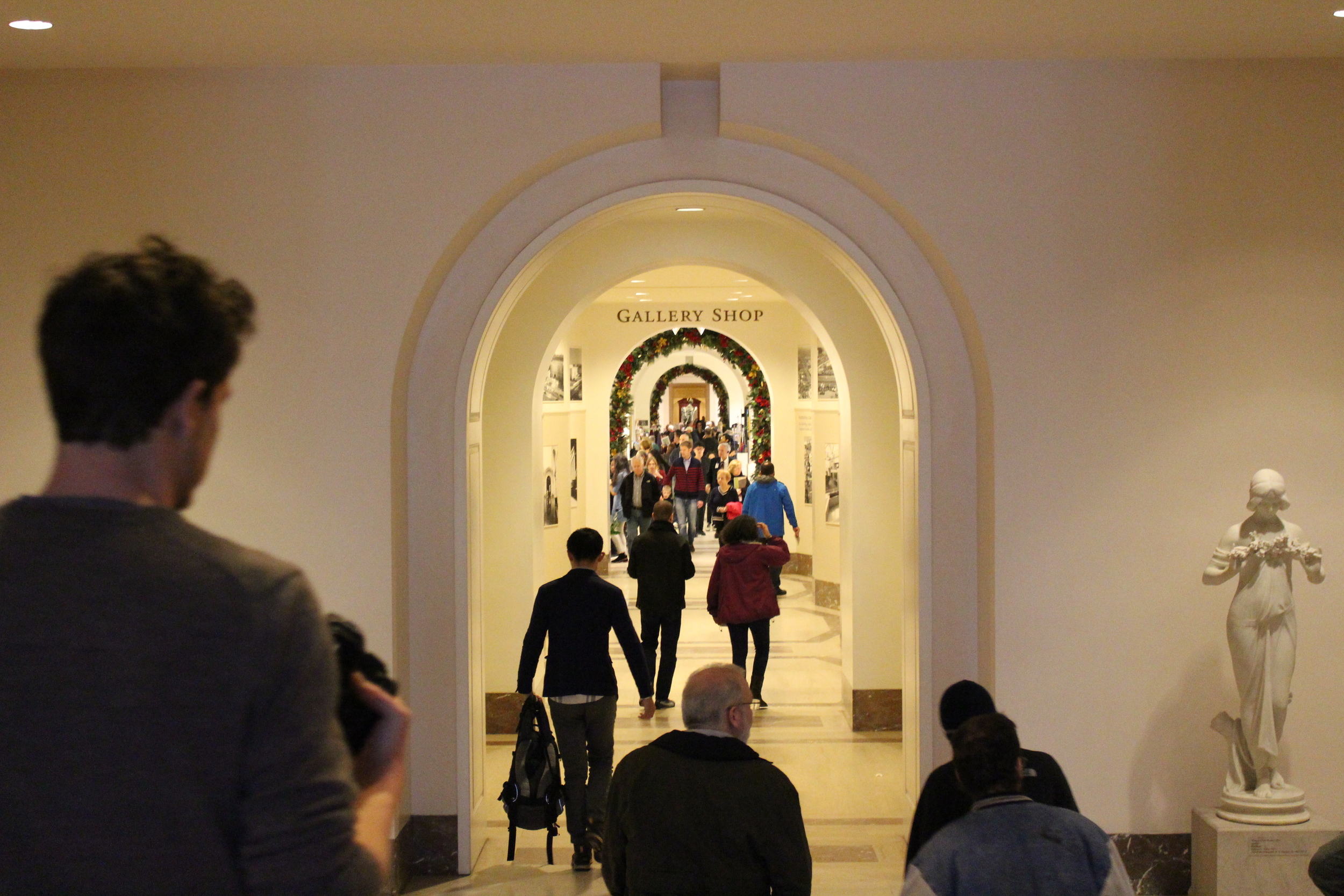One of my – and my family’s – Christmas gifts to myself was a trip to “Power and Pathos: Bronze Sculpture of the Hellenistic World,” which is at the National Gallery of Art through March 20.
For me, an amateur classicist whose love of Greco-Roman culture threads all of my writing, “Power and Pathos” in Washington was something of a Holy Grail. It originated at the J. Paul Getty Museum in Los Angeles – one of two big shows on the ancient Greeks to appear this year, the other being “The Body Beautiful in Ancient Greece” at the British Museum.
But neither London nor Los Angeles was in my game plan and when my annual Christmas trip to Washington arrived, so did my moment.
“Alexander the Great on Horseback” (first century B.C., bronze with silver inlays). Courtesy the J. Paul Getty Museum
That moment didn’t disappoint, for no sooner did my photographing nephew and I enter the exhibit than we encountered “Alexander the Great on Horseback,” a small first century B.C. silver-inlaid bronze replica of the bronze original by Lysippos, the only artist allowed to capture Alexander’s likeness besides the painter Apelles and the gem-carver Pyrgoteles. The backdrop for this equestrian statue is a reproduced portion of “The Alexander Mosaic” (circa 100 B.C.), depicting the Greco-Macedonian conqueror’s defeat of the Persian emperor Darius III at the Battle of Issus. (Both works are in the Museo Archeologico Nazionale in Naples.)
Seeing this sculpture, which I’ve known since my childhood, was like encountering a beloved friend I hadn’t seen in years – or maybe one I had known only through letters and photographs. I drank it in and, overcome, stepped away from it, racing on to room after room of gods and heroes, athletes and emperors like the proverbial kid in a candy store. It was only later that I realized how profound the effect of an ancient object could be, particularly one that links you tangibly to your childhood hero, no matter the degrees of separation.
It’s fitting that “Alexander the Great on Horseback” – which captures him on his rearing steed Bucephalus, his raised right hand brandishing a now-absent sword – should occupy pride of place in this exhibit. Before Alexander, culture flowed East to West. After Alexander, it flowed West to East through Hellenism, the dissemination of all things Greek. But Hellenism also took the Greek fascination with the body in a new direction, imbuing it with a realism that brought brutality to beauty, along with individuality – qualities underscored by the warmth and intimacy of bronze.
I must confess, however, that I prefer the ideal to the reality, the beauty of the “Bust of an Ephebe (Beneventum Head)” (circa 50 B.C. bronze and copper) that graces the exhibit tchotchkes – with its almond eyes, straight nose, full lips and thick curls winding about a graceful neck – to the reality of old men with jowls, furrows and beards.
And it would appear that artists do, too. As my nephew and I wandered through the National Gallery, we saw the effect of the Greek love of beauty everywhere – in a cast of Augustus Saint-Gaudens’ “Diana,” a golden paean to the Beaux Arts world of late 19th –century America; in Paul Manship’s spare, angular Art Deco (1920s) Diana, Acteon and Europa; in the kouros, or Egyptian-influenced youth, that dominates a silk postmodern assemblage by Robert Rauchenberg just as it did archaic Greek sculpture.
They have come full circle, the ancient Greeks, and so have I. Sitting with my nephew by the fountain in the Garden Café, savoring the all-you-can-eat Greek buffet, I thought of all the years I had been to the National Gallery – as a child, as a student and as an art critic.
Often it was in the company of my beloved Aunt Mary, who raised me and encouraged my love of the ancient Greeks.
Now, I am the aunt.
Somehow, I think the Greeks would’ve understood.




